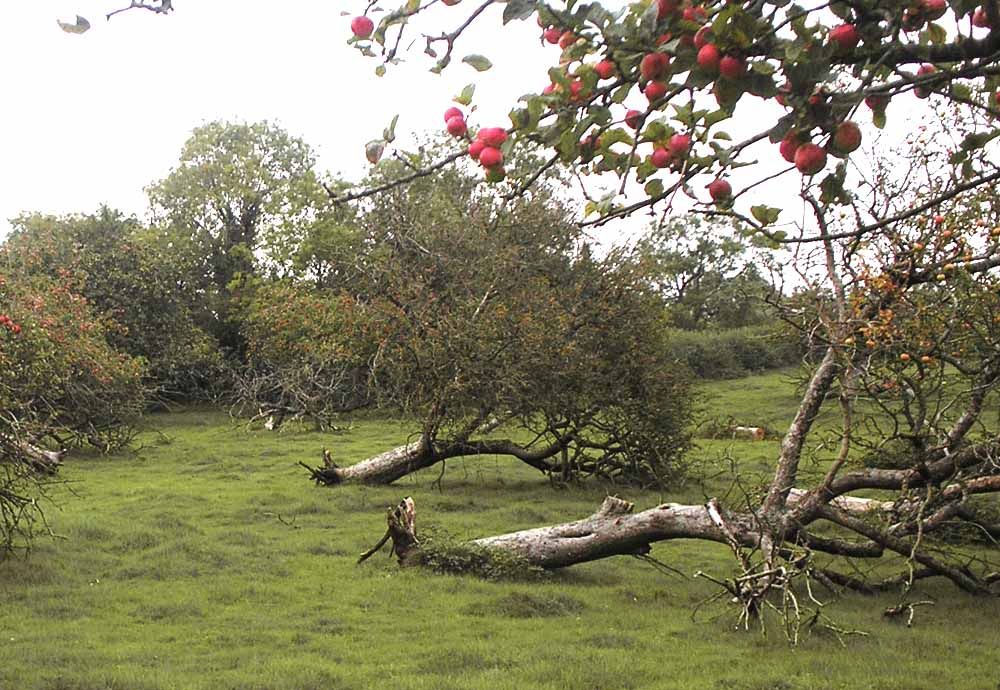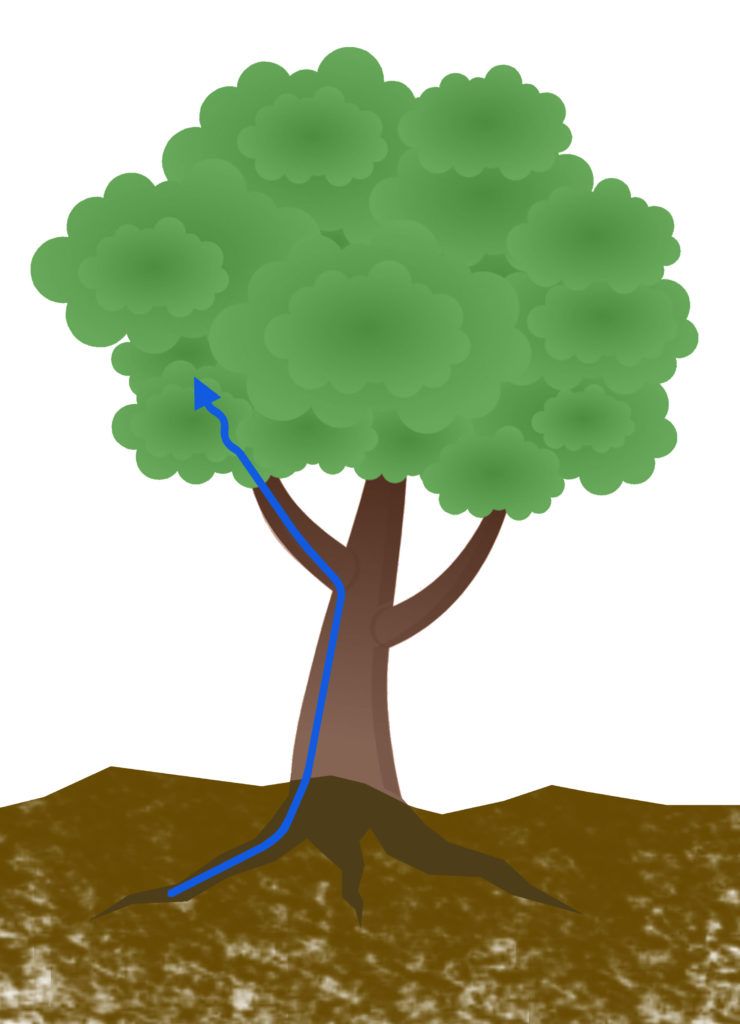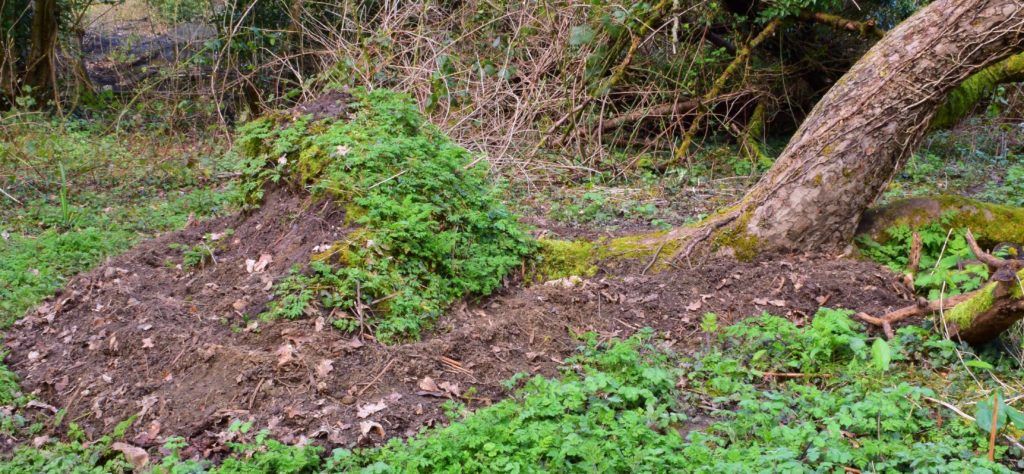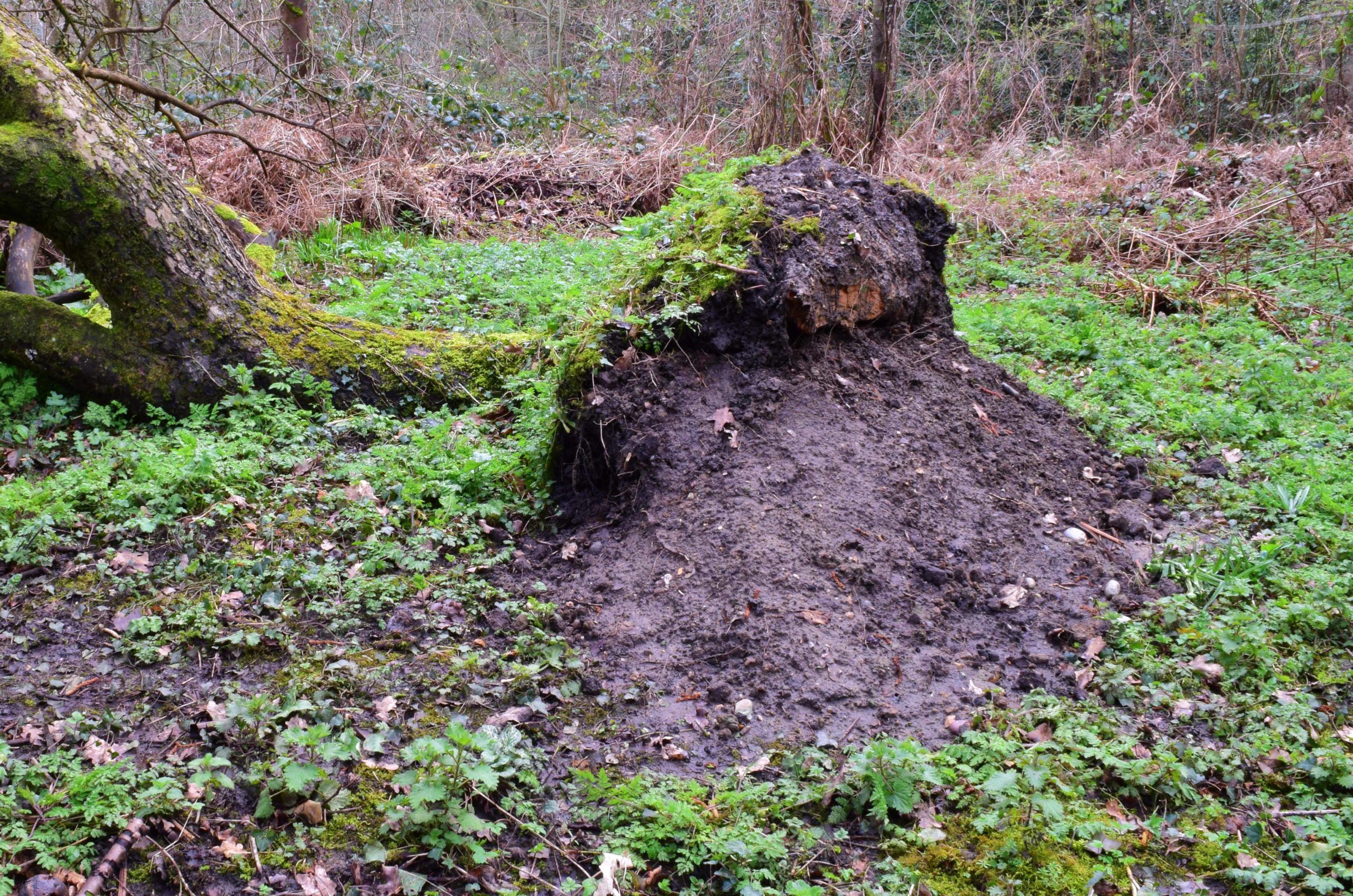Rescuing a wind-thrown tree

Veteran trees are the lifeblood of traditional orchard biodiversity, so when they blow over in a storm, consider giving them a new lease of life by trying to grow a 'phoenix tree'
As trees age they become susceptible to being blown over in storms. A wind-thrown tree will probably still be attached with a few roots on one side. This is all that is needed to attempt to get a phoenix tree to grow. This sometimes naturally occurs, but we can help it along by taking a few easy steps. Some trees put on regenerative growth better than others so this may or may not work.
Start off by covering exposed roots with soil and piling more up around the trunk wherever it is close to the ground. Press it in firmly throughout to exclude all air pockets.

Make sure water runs into the mound rather than down the slopes away from the tree.
Next, remove heavily damaged branches with a clean cut. Every case is different so there’s no set method. The trunk or a low down major limb needs to be close enough to the ground to put down new roots without mounding the earth up too much. It may be necessary to perhaps tentatively remove branches bearing a load so that the tree can rest on the soil. If damaged branches need to be removed from beneath but the tree doesn’t need to go any lower then consider propping the tree with sturdy off-cuts. Cut safely being very conscious of where the tree might move – remember that it may roll as well as drop. The roots may already be under a lot of strain so further significant movement should be avoided. If you have to mound soil up more than 6 inches or so it can wash away and/or be too freely draining, so you might have to consider building a raised bed around the roots and lower trunk.
The tree has had a big shock and may die whatever you do, so once the rootball has been covered and the soil built up around the trunk, take a year to observe how the tree responds as the roots and branches adjust to their new situation.

The next winter reduce the crown starting with parts that are struggling to survive anyway. Roots generally feed the part of the crown closest to them (see diagram), so underfed parts may die off.
You are aiming to reshape the crown to make a new upright tree, so if it survives the year, give it a fairly hard winter prune and see where the water-shoots emerge. Select a strong one close to the old base to be the new leader and remove other water-shoots and a bit more of the redundant “old” tree. Formative prune the retained water-shoot like the new tree that it is, albeit a phoenix arising from the ashes.


